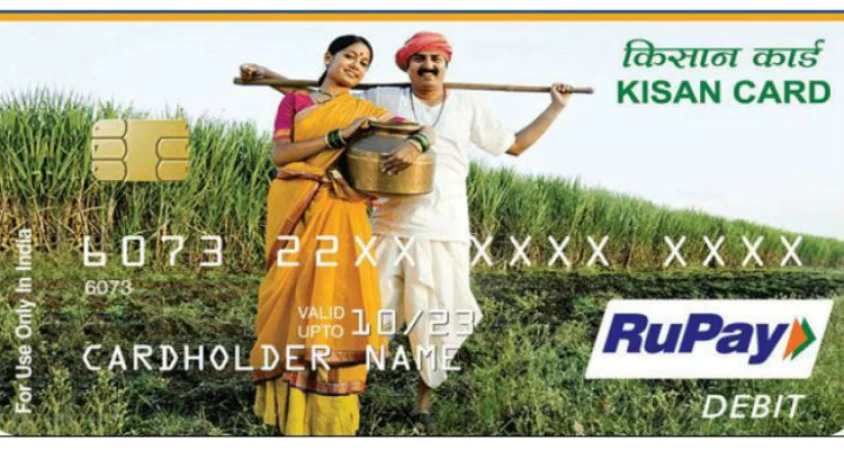What’s the first thing that comes to mind when you think of agricultural loans or credit cards that are extended to farmers? You probably think of one of those large-scale government schemes. After all, with agriculture forming the backbone of India’s economy, it should come as no surprise that there are many government schemes that provide farmers with long-term loans.
But what about the short-term credit requirements of farmers?
In August 1998, the National Bank for Agriculture and Rural Development (NABARD) decided to answer this question by providing short-term credit to farmers via the Kisan Credit Card (KCC) scheme.
The aim of this scheme is to provide farmers with timely access to credit for all of their cultivation needs. This means that whether a farmer requires money for working capital or whether he requires money to help him tide over post-harvest expenses, he can get it via the Kisan Credit Card.
While this sounds like a great scheme, how exactly does it help farmers?
Let’s start by first understanding what this scheme entails.
Objectives of the Kisan Credit Card (KCC) Scheme
The objective of the KCC scheme is to provide farmers with adequate financial support for all their farming needs, thereby preventing them from having to apply for multiple short-term loans. This financial support extends to:
- Meeting their short-term credit needs for the cultivation of crops.
- Meeting post-harvest expenses and any marketing expenses.
- Helping farmers meet their household consumption expenditure.
- Providing working capital to help maintain farm assets and help in maintaining activities allied to agriculture (for example, dairy farming, floriculture, inland fishery, etc.).
- Helping farmers with the credit required to invest in agricultural machinery like tractors and pump sets.
- Providing short-term credit to help farmers rear animals, birds, and fish.
Now that you know the objectives of the KCC, let’s see how it works.
How Does the KCC Scheme Work?
As the name suggests, the Kisan Credit Card is a credit card which comes with a pre-set credit limit like any other credit card.
In fact, just as banks check your income and your credit history to determine your credit limit, the credit limit on KCC is set by taking into consideration a farmer’s landholding, the future projection of his crops, and the amount of finance he is looking for.
Like any normal credit card, KCC too can be used at banks, point of sale terminals, and at ATMs.
The two types of financial assistance that KCC extends are:
Cash Credit
Let’s say that a farmer needs to buy seeds, fertilizers, or maybe even fuel for machinery. These expenses can be quite high. In such cases, the farmer can make his purchase by using his chip-enabled card at a point of sales terminal.
If the merchant, doesn’t accept card payments, the farmer can use the card as they would an ATM card and withdraw cash.
Like with an ordinary credit card, the amount withdrawn or used will be reduced from the total credit limit on the card.
As such, farmers do not have to dive into their savings or take loans from unscrupulous moneylenders. Moreover, they can also convert their purchases into EMIs. This helps farmers manage their monthly payments.
Term Loan
The truth about agriculture is that money is required not just for the purchase of seeds and fertilizers, but sometimes a large amount may also be needed to purchase machinery. In such cases, the farmer can also get a term loan from the bank. The amount of loan that a farmer is eligible for will differ from bank to bank. While collateral is not generally required, there could be cases wherein the bank may require collateral to extend a large amount of credit.
So, this is how KCC works. But what is the interest charged on these facilities?
- Loans under Rs.3 lakh are charged around 7% p.a.
- For loans above Rs.3 lakh, the interest rate is determined by the bank.
Along with this 7% interest, farmers also get central government subsidies up to 3% which can lower the amount that they end up paying.
Benefits of the Kisan Credit Card
It goes without saying that the two main benefits of KCC (as mentioned earlier) are:
- It offers timely short-term credit to farmers.
- Prevents farmers from having to take multiple loans.
There are other benefits as well. These are:
- All Farmers are Eligible for the Loan
The only eligibility criterion when it comes to KCC is that the person applying for the credit card should be engaged in a form of farming. This includes farmers who own their own land as well as tenant farmers. To be eligible for the scheme, the farmer needs to have a minimum production credit of Rs.5,000.
- Requires One-Time Documentation
Many farmers may not be aware of banking procedures and may get overwhelmed if they are required to produce documentation each time they apply for credit. This is why KCC is a boon to farmers. It simplifies the entire loan application process. The farmer needs to apply for the card only once and as a result, they have to provide documents only once.
- Low Rate of Interest
In comparison to finance from moneylenders, KCC has a low rate of interest of just 7 % p.a. Moreover, central government subsidies up to 3% mean more savings for the farmer.
You should also take into consideration that if it weren’t for KCC, farmers would have to take multiple loans and each loan would have its own interest rate. Thus, the amount the farmer would have ended up paying as interest would have been much more.
- Flexible Repayment
The scheme provides farmers with a flexible repayment schedule enabling them to make payments post the harvest season. The scheme also enables farmers who have had a bad crop to defer or reschedule their payments.
- Is Linked to a Savings Bank Account
The Kisan Credit Card is also linked to the farmer’s savings bank account. This way, the farmer has only one bank account and whatever credit remains in the account earns interest.
- Provides Insurance
All Kisan Credit Card holders enjoy insurance coverage under the National Crop Insurance Services for crop loans. Cardholders also get to enjoy up to Rs.50,000 death and permanent disability cover and coverage up to Rs.25,000 for all other types of risks.
- Revolving Credit Facility
The Kisan Credit Card scheme also provides cardholders with a revolving credit facility. This means that they are only charged interest for the amount they spend.
As you can see, a Kisan Credit Card is extremely beneficial for farmers. It saves them time and the hassles involved in everyday banking. As a result, they are able to deal with their farming activities without having to worry about where the money they need is going to come from.



